Hey, this is Kelis Landrum from True North Social. We are a digital marketing agency based in Los Angeles, and we are also Shopify experts. We work on quite a few stores with different clients, and I am going to talk a little bit with you today about our process for creating new stores from templates.
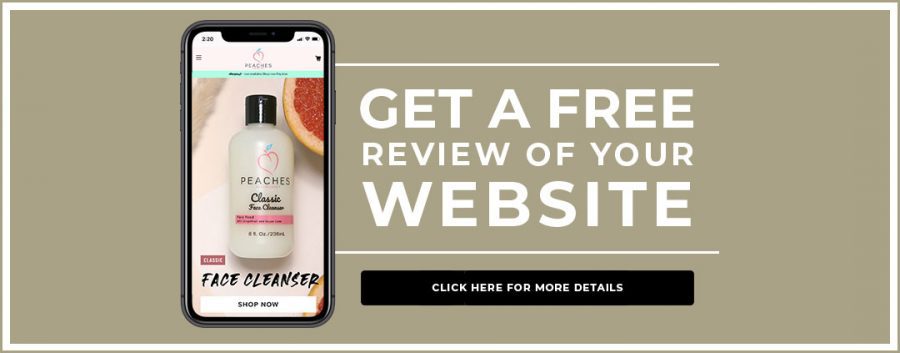
Process is very important to us. In fact when we talk to potential new clients; people call us up all the time and they say, “Hey I want to start a store, I need some help with it, what can you do for me?” They are generally talking to a lot of different people that might be able to help them out with doing this.
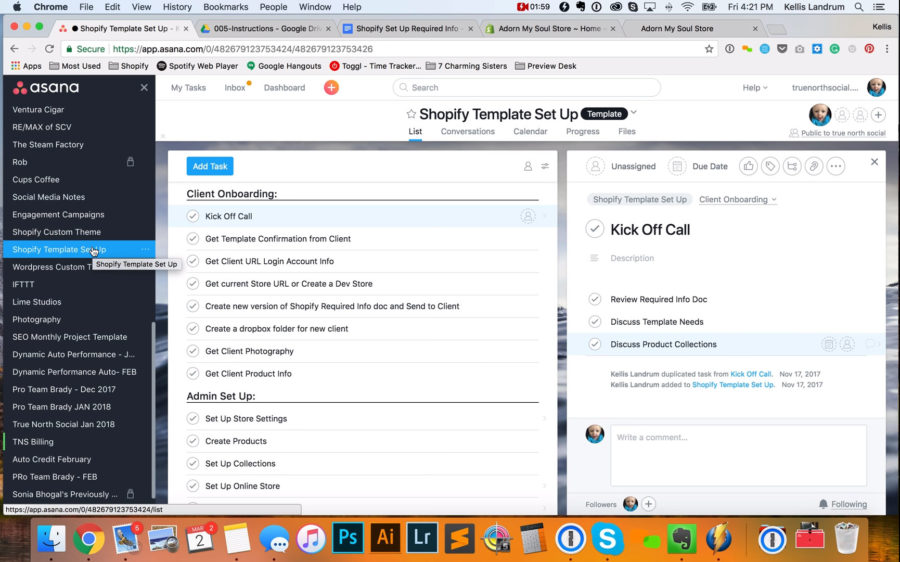
Why should they work with us? Well, a big part of the reason that clients like working with us is because we can help them set up a store from a template very quickly. Mostly because we have a really great, well-established process for doing this. That is not to say you can’t set up Shopify yourself. There are really great instructions and tutorials for doing this on their website. But, we set up several stores a month at minimum. So we really have this down, we have a pretty good team of people that do this. We are very organized in the way we go about doing it. So I am going to walk you through our organizational process.
So our organizational process for setting up Shopify starts in our project management tool, which is called Asana. Asana allows you to create all sorts of different tasks for different things. We have created a default template for setting up Shopify templates. So whenever we need to set up a new store we take this template, we click on it and say… I’m sorry; we click on this and create a new project, right? I don’t actually need to create a new project because this is just our example but, it will duplicate this and whatever your store name is we will change it to your store name; we will have a new project set up. Inside of this template set up project we have lots of different tasks involved in your store set up. Now there are three main sets of tasks or three main phases to setting up a Shopify store. The first is client onboarding pre-production as we like to call it in-house. The second is setting up the store admin; the last is our pre-launch checklist. Now these are distinct phases, we try and separate them; they generally fit into one and then the other, then the last before we are ready to set up the store.
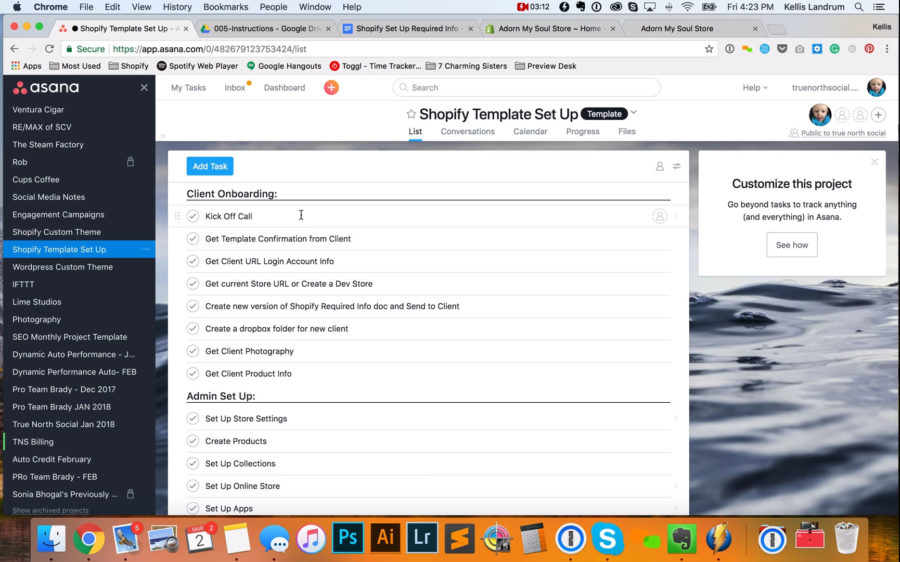
So let’s roll through a few of these, I am not going to get into too much depth about anyone of them. But this should give you a pretty good idea about what is involved in setting up a Shopify store.
So the first phase I mentioned, client on-boarding; we do a kick-off call. We talk to you about… we have a required info doc; we talk to you about what the needs are for your template. You know you want to set up a store with a template; you are not sure which one. We will go through in a little bit of detail with you what… kind of products do you have, what do you want to do with the site. We can make a few recommendations to you about templates if you have templates you know you like and you want to use, you can tell us that you like this one and we can roll with that. We will also discuss your product collections, how many products you have, what kind of collections you think you want to build. So when we get down to actually building the store we know these are the collections we are going to create, and you can let us know when you give us the product info exactly which products are going to go into each collection.
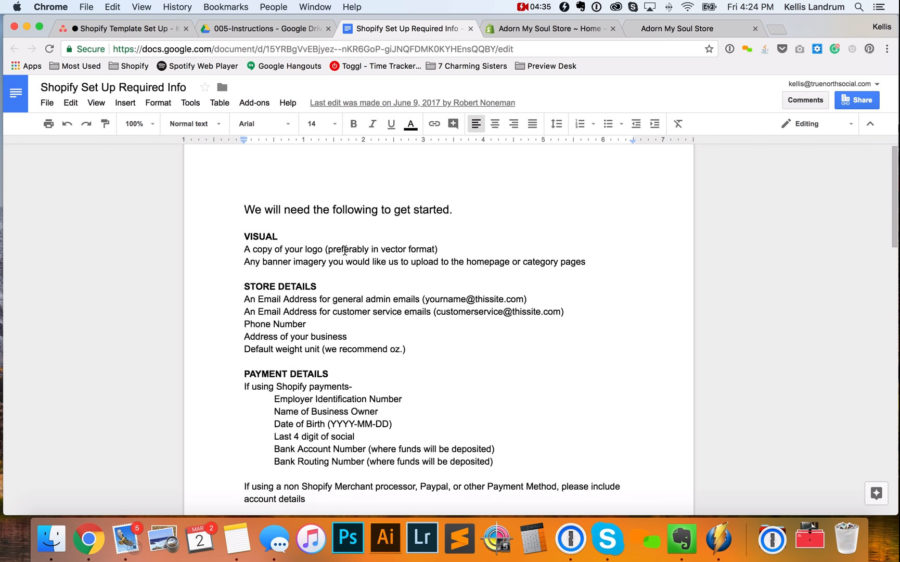
I will mention really quickly the required info doc. There is certain information that Shopify needs in order for your store to be set up. We already have a word document set up of information we will need to get from you in order to set up your store. Copy of your logo, any banner imagery you want to provide if we are not making it. Every store needs an admin e-mail address. We will need to set up payments. You can either give that to us or we can walk you through setting it up yourself. You will need store details like most stores are going to have a refund policy. Most customers want to know if they don’t like this thing or something is wrong with it, I want to return it, how does that work? We have examples of these things you can work off of. Terms of service, privacy policy, all of this kind of basic information. Every store if you are going to ship a physical product will need a shipping address. We will need to know do you want to ship anywhere in the US? Do you want to ship to foreign countries? Do you want to limit the US to certain States? You got to get all of that down. We have to know if you want to ship flat rate? Do you want to do carrier calculated rates? We need to know what products you are going to include. Do you have a spreadsheet of products for us? Or do you just have a small number of products and you want to give us that product information? Also, need pictures of your products, and we can work with you to get all that product information. We are also going to need the information of your domain if you have purchased one already. You are going to want it to resolve to www.the name of my company.com. Right? So we will need all these kinds of information from you in order to set up the store.
So when we do the kick-off call we will go through all this stuff. After we get off the kick-off call, we will confirm things with you, we have a checklist of things to make sure we have received your URL. We have in fact set up a store or if you have an account set up with Shopify that we get access to it. We set up a Dropbox folder for you so you can upload images to us or anything else you want to give to us. We have your photography, all of this information we need to get from you in order to get the store up and running.
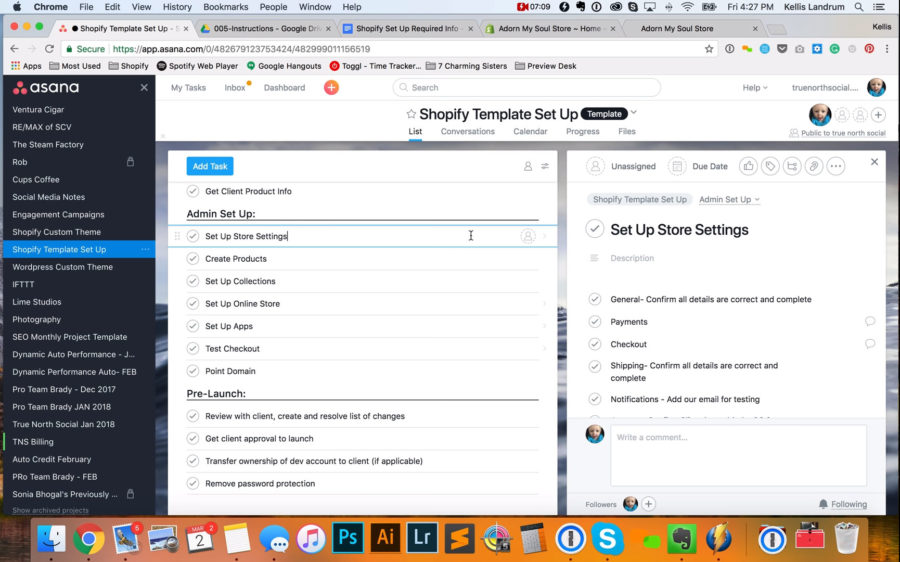
So the second phase is admin set up. Assuming you have given us all of the information in the required info doc, we can go through setting up your store settings. This is a pretty long, complicated checklist. Asana is fantastic because it has tasks that you can create, and you can also create subtasks. Some subtasks are going to have their own subtasks. We can create as many levels of these as we need to. Some of the more complicated things like setting up payments, and setting up shipping require a lot of small tasks. This is one of the things our clients really love about working with us is… because we work with Asana; if you want to see where we are in the project, all of these tasks get checked off as we complete them. For our clients; we can create or invite them to our Asana account for just this project. So as we check off tasks in this project, we can go okay, this one is done, this one is marked as completed, oh this one is done and we can mark and complete, oh we don’t have these done, we need to un-mark them. I need something from a client or one of my other team members; I can write a comment to someone. I can pick from Robert who is one of our team members, I can say, “Hey I need this thing.” This will notify Rob when I hit comment. Hey, there is this thing I need to complete this task, can you please upload it right here from your computer, or from Dropbox, anything you want. It is all very handy right in here. Delete this comment because we don’t actually need it. But clients can see in real time the burn down on these tasks, what has been completed and what has not, right?
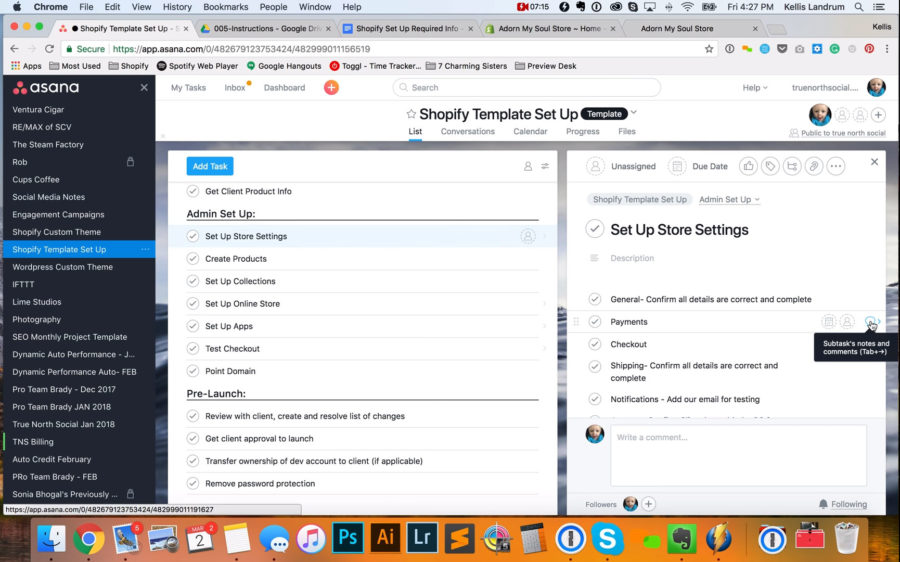
So if you are curious about what is involved in setting up our store settings; you can see there is general settings, there’s payments, there is checkout stuff, there is shipping, there is notifications, there is account stuff that we need to manage. So all of these tasks we need to go through them one by one and check them off one at a time to make sure they have been completed before we can launch a store. It is generally very easy for us to go through all this stuff and make sure everything has been checked off and… as we go through we burn through everything and check it off. So we go through store settings, creating products, we set up collections, we set up the online store which is a little bit misleading because the whole thing is an online store, but if we were actually making reference to the admin of Shopify over here under sales channels. If I click on online store it reveals a bunch of new options under here. There are options for themes and blog posts, for pages and so on and so forth. So we have corresponding tasks set up here under online store to set up preferences, set up pages, preferences are theme preferences; things like setting up the title and meta description. If you have colors you know you want to use that are available to set up through the theme we will set up those. If you have a Facebook pixel, setting up that stuff. There is a lot of little options in here. Setting up preferences, setting up theme options, intersections, general settings, setting up things in the header, slide shows, feature products, so on and so forth. These are general options that are available in most themes. Some themes have stuff that is specific.
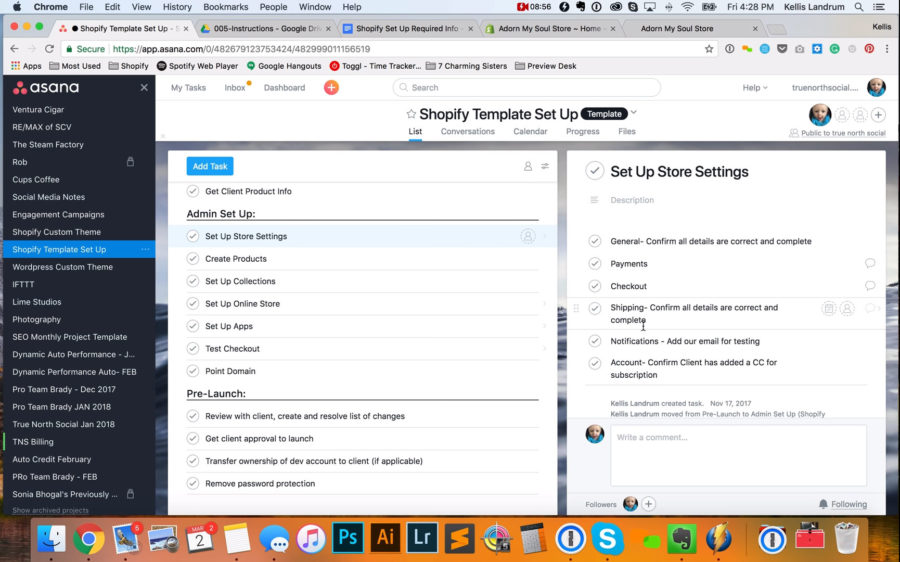
One of the other nice things about doing this is we can add tasks as we go. If you know in fact you want to add some text on a section of the homepage that says something about your brand; we can click here and we can say, add a block of text about brand. Say you had given that to us already, we could put in the description here; our brand is the best stuff ever. Let’s assume this is something you wanted to say in this block, right? We can take note of all these things, we can add stuff. Let’s say in sections… at some point you wanted to switch sections you numbered one, two, three, four, five, six as they go down the page, and you wanted to switch sections two and three, we could make a task out of that, then we would know that when we get to this part we need to do that.
This is very good; this is an excellent tool for being able to keep track of these little tasks. Because little tasks can slip through the cracks, it is very easy for that to happen unless you have a good method for tracking all of those little tasks.
I am going to remove this task out of here, or maybe just delete it, something like that. Get this over here, there we go.
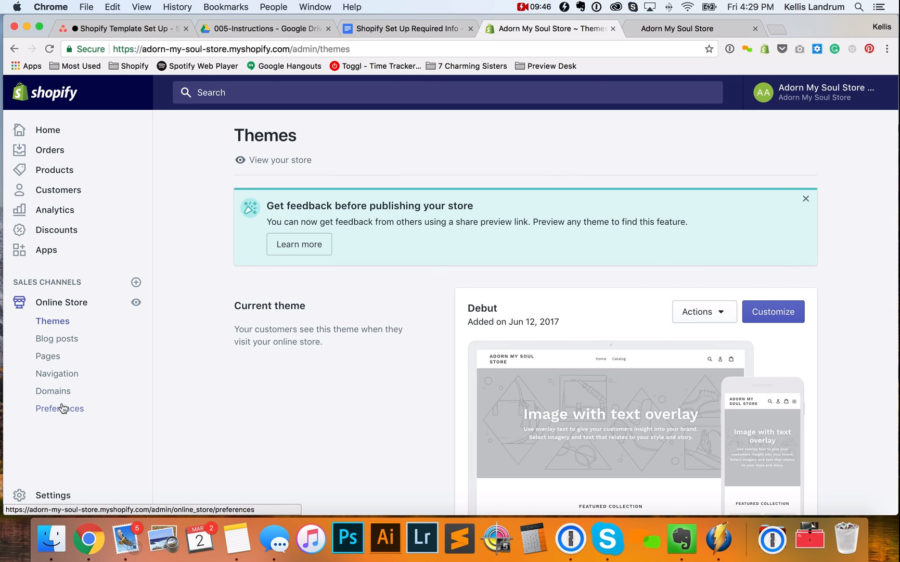
Alright so, let’s see, set up online store, set up apps. We suggest to most of our clients that they set up Rewind, which is an app for backing up your store. Always handy to have a backup; most of our clients have a Mail Chimp account or some sort of e-mail marketing system. We have a habit of testing checkout, not everyone does this. This is really huge for us, we highly suggest creating a test product between 50 cents and a dollar, and actually going through the checkout process with it to make sure you are in fact able to check out correctly, that it generates an e-mail that says this thing has been bought, it appears in the admin, and our client actually received funds. Usually, this happens within 72 hours within processing the order. But being able to get money into your bank account is pretty important, right?
So we are pretty thorough about this process of going through, setting up a store. It is a little bit more than just, hey I am going to install a template to get a store launched correctly, right? The last part of this is we would get your domain, we would review this with you, get your approval to launch, then we would transfer ownership of it, we would get your URL situated and then… when the store is 100% ready to go, you say yes I love the store, I am happy, let’s make it live. Shopify has built-in password protection, that is usually the last step of our project. We move password protection off of your site and it is then live for the public to be able to go in and buy anything that you offer.
I hope this is a helpful demonstration of what it takes to get a Shopify template set up, what our method is, and what we view as a best practice. I hope this has been helpful for you to kind of wrap your brain around what is involved.
Once again, my name is Kelis Landrum, I am at True North Social, we are Shopify experts located in Los Angeles California. If you need any help with your website, feel free to go to ours, it is www.truenorthsocial.com. Our phone number is on there, there are plenty of forms you can fill out if you want to get in touch with us. Feel free to drop us a line, thank you very much.